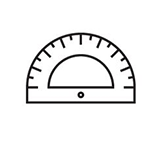철질운석 Sikhote-Alin 10140 
| 국내/해외배송 | |
|---|---|
| 배송비 방법 | 택배 |
| 배송비 | 4,000원 (50,000원 이상 구매 시 무료) |
| 수량 |
|
| 상품 정보 | 가격 | 삭제 |
|---|---|---|
| [총 상품금액(수량)] 0 (0개) | ||
Sikhote-Alin Meteorite
Basic Information
Location Map
Here is a map showing where the Sikhote-Alin Meteorite Fell:
The Sikhote-Alin Fall
The Sikhote-Alin meteorite fell during daylight at 10:38 a.m. local time on February 12, 1947. Witnesses reported a fireball that was brighter than the sun. It came from out of the north -- about 15 degrees east of north and descended at an angle of 41 degrees. It left a trail of smoke and dust that was 20 miles long and lingered for several hours. Light and sound of the fall were observed for two hundred miles around the point of impact.
The speed of entry was estimated to be 14.5 kilometers per second. This is about 8.7 miles per second or 31,000 miles per hour. As the meteorite entered the atmosphere some of it began to break apart. The group of fragments fell together.
When the descending group of meteorites reached an altitude of about 3.5 miles, the largest mass apparently broke up in a violent explosion. This was a very low altitude for such an event -- about half the altitude at which passenger jets fly.
The fragments scattered over an elliptical area of about a half a square mile. The largest fragments made small craters and pits. One of these measured 85 feet across and 20 feet deep. The larger craters are located at the far end of the strewn field. (I am working o a map to show this.)
Sikhote-Alin is one of the most spectacular falls of recorded history and one of a very small number of recent iron meteorite falls.
Character of the Sikhote-Alin Meteorites
Specimens from this fall are of two types. Some -- those called "complete individuals" -- show ablation and fusion crust. These are probably the ones that broke off of the main mass early in the decent. The surface was vaporized and eroded by the trip through the atmosphere. These are characterized by regmaglypts -- or thumb prints -- ablation cavities in the surface of the specimen.The second type of Sikhote-Alin specimen is the fragments. These show the violent effects of being torn apart in the atmosphere or being blasted apart on impact with the ground. A metallurgist would say they were cold-worked. These are probably the fragments from the explosion 3.5 miles high. Many look like shrapnel from violent explosions. Some show shield shapes or orientation. Striations may be seen on some flatter surfaces.
Size of the Sikhote-Alin Fall
The total mass of the Sikhote-Alin has been estimated at somewhat under 1000 tons. Of course this was spread over the area of the strewn field. The largest fragment is a 1,745 kilogram specimen now on display in Moscow. A larger number of specimens range from 1000 kg on down.Structure of the Sikhote-Alin
The Sikhote-Alin is a coarsest octahedrite. The Widmanstatten bandwidth is nearly a centimeter. The bands are so large on this meteorite that if you were to saw and etch a smaller piece, you might see no crystal structure at all. While the structure may not be readily apparent in sawed and etched specimens, it can be seen in some individuals. The ablation in the atmosphere preferentially eroded along the crystal boundaries. The diagonal line down the center of specimen SA193 is such an ablation. The specimen shown here, SA245, shows similar features between the green arrows.
Chemistry of the Sikhote-Alin
The Sikhote-Alin is classified in Group IIB, with 5.9% Ni, 0.42% Co, 0.46% P, about 0.28% S, 52 ppm Ga, 161 ppm Ge, 0.03 ppm Ir. Of course, almost all of the remaining portion of the meteorite is iron.The important minerals are:
A Note on Sikhote-Alin Specimens and the Opening of Russia.
Only since the opening of Russia have we seen these beautiful specimens. If the political environment changes, then there may be fewer. I recommend an article by Roy Gallant in the February 1996 issue of Meteorite! magazine.

















 확대보기 및 상세정보
확대보기 및 상세정보